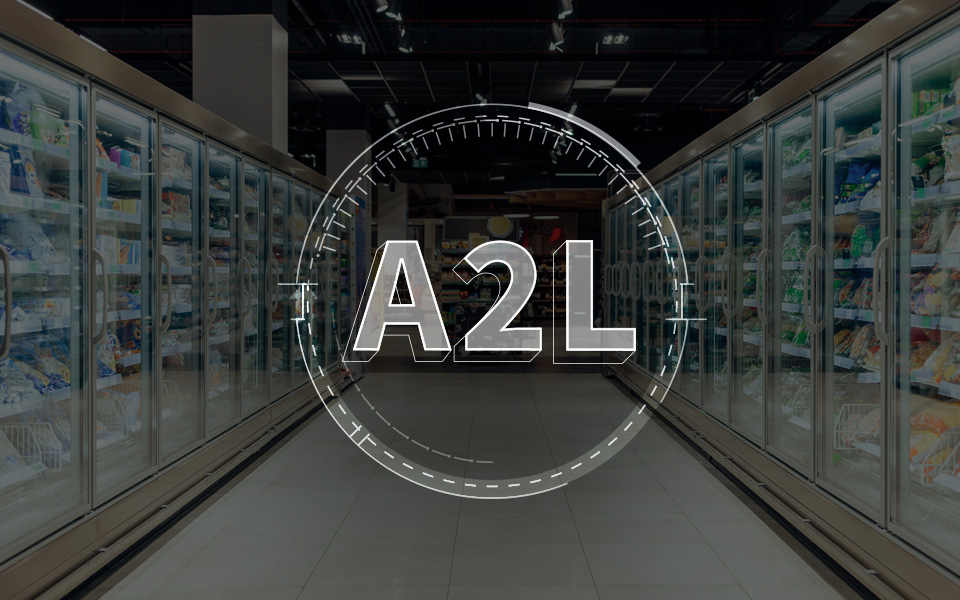*On June 1, 2023 Emerson’s Climate Technologies business became a new standalone company – Copeland. Though our name has changed, we are building on more than a century of HVACR innovation and industry leadership, and Copeland continues to offer the same products, industry stewardship, and learning opportunities you’ve grown to trust. Information found on this webpage posted before June 1, 2023 may contain our old name or branding, but you can be at ease knowing it was created with the knowledge and expertise of Copeland.
In 2017, the Department of Energy (DOE) passed its final rule on new energy conservation standards for walk-in coolers and freezers (WICFs). The ruling mandated new efficiency requirements on WICFs with dedicated condensing systems in both low- and medium-temperature applications. With enforcement of these requirements now having taken effect, I recently published an article for Contracting Business that explained the implications of the DOE’s ruling. View the full article here and read a summary of it below.

Per the ruling, 20–40 percent energy reductions are now required on WICFs smaller than 3,000 square feet manufactured after the following enforcement dates:
-
- January 1, 2020, for WICFs with medium-temperature dedicated condensing systems
- July 10, 2020, for WICFs with low-temperature dedicated condensing systems
Now that enforcement dates are here, industry stakeholders are tasked with verifying that they are achieving compliance with the DOE’s WICF rule.
Who and what does the ruling apply to?
The ruling directly applies to anyone manufacturing, producing, assembling or importing to certify WICF components. From a refrigeration system standpoint, compliant components refer to dedicated and packaged condensing units (indoor and outdoor) used in both new and retrofit applications, including:
-
- Condensing units that are assembled to construct a new WICF
- Condensing units used to replace an existing, previously installed WICF component (retrofit)
- Condensing units used within packaged systems
Other components — such as unit coolers (evaporators), doors, panels and lighting — are also within the jurisdiction of the DOE’s WICF ruling.
Contractors and wholesalers can still use and stock condensing units that were manufactured before the DOE enforcement dates for retrofit purposes. All newly manufactured condensing units must be compliant if intended for use in applicable WICF applications, as defined by the DOE’s ruling.
How can you measure efficiency and achieve compliance?
The DOE uses a metric created by the Air-Conditioning, Heating, and Refrigeration Institute (AHRI) called the Annual Walk-In Energy Factor (AWEF) to evaluate a WICF system’s energy efficiency. This AWEF calculation is based on “a ratio of the total heat, not including the heat generated by the operation of refrigeration systems, removed, in Btu, from a walk-in box during a one-year period of usage for refrigeration to the total energy input of refrigeration systems, in watt-hours, during the same period.”
Per the DOE, there are several WICF equipment classes below the 3,000 square foot limit that must meet or exceed the minimum AWEF ratings based on capacity and application (e.g., medium- or low-temperature, indoor or outdoor). Condensing unit manufacturers and WICF original equipment manufacturers (OEMs) must follow approved AWEF testing and certification procedures to meet or exceed the DOE standards.
How will the ruling impact you?
From OEMs and wholesalers to contractors and end users, the DOE’s WICF ruling has broad impacts throughout the industry. Because the DOE WICF ruling impacts both new and retrofit equipment, every segment of the commercial refrigeration supply chain will need to understand its implications. Here’s what you need to know:
-
- OEMs —need to complete the engineering design cycle, testing and certification to sell new compliant equipment.
- Contractors —must understand that if they replace a condensing unit with one manufactured after the DOE enforcement dates, it must be an AWEF-compliant unit. However, units manufactured prior to the DOE’s enforcement dates already in inventory may still be used.
- Wholesalers —must be prepared for changing inventories and begin to carry only AWEF-compliant condensing units that were manufactured after the 2020 enforcement dates for the relevant WICF applications.
- Design consultants —must be well-versed in the regulatory impacts to advise end users in the selection of energy-compliant, sustainable systems.
- End users —need to select future-proof equipment that aligns with their long-term refrigeration strategies.
How is Emerson helping OEMs?
As a manufacturer of condensing units for a wide range of refrigeration applications, we manufacture WICF condensing units that have been certified as meeting the DOE’s minimum AWEF requirements. Compliance data is listed in our condensing unit AWEF product literature.
For WICF OEMs, using certified condensing units will help them meet the compliance requirements in one of their primary refrigeration system components. OEMs should be able to combine an Emerson AWEF-compliant condensing unit with any AWEF-compliant unit cooler in order to achieve compliance in a dedicated system.
So if you’re an OEM of walk-in coolers and freezers, you now need to manufacture WICFs that meet the DOE’s minimum AWEF standards. If you’re not sure how to proceed with this compliance process, you may consult with Emerson’s Design Services Network to expedite your product development, design and testing processes.
With our breadth of products, expertise and resources, we can help you achieve compliance and develop sustainable refrigeration strategies for your customers — and our future.

A2L Refrigeration Overview — Systems, Safety and Servicing Considerations
*On June 1, 2023 Emerson’s Climate Technologies business became a new standalone company –...

Servicing the Next Generation of Lower-GWP Refrigerants
*On June 1, 2023 Emerson’s Climate Technologies business became a new standalone company –...

Improve Food Safety by Shifting to Proactive Measures
*On June 1, 2023 Emerson’s Climate Technologies business became a new standalone company –...
